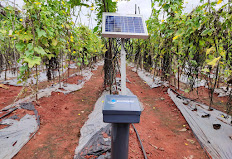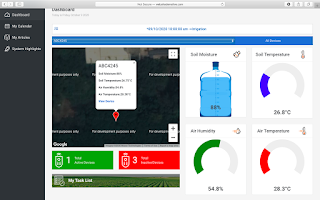
Groundwater Depletion Due To Over-Irrigation The modern consumer is nowadays more conscious of buying sustainable or organic agricultural products because of health and environmental reasons. However these efforts, while laudable, are only worth it if the product being consumed is grown in the right manner. This means that agriculturists have to take care, especially in areas with inconsistent water supply and mixed soil like India, that their irrigation methods are sustainable, but without depleting groundwater in any way. This is not an idle fear. The Central Ground Water Board (CGWB) in the Fifth Minor Irrigation Census [1] has posited that more than 1000 blocks in India have become water stressed since the Green revolution caused Indian farmers to depend more on groundwater rather than rainwater for their needs. According to this alarming report, the groundwater level in India has declined by 61 per cent between 2007 and 2017 and of the extracted water 89 per cent is used


